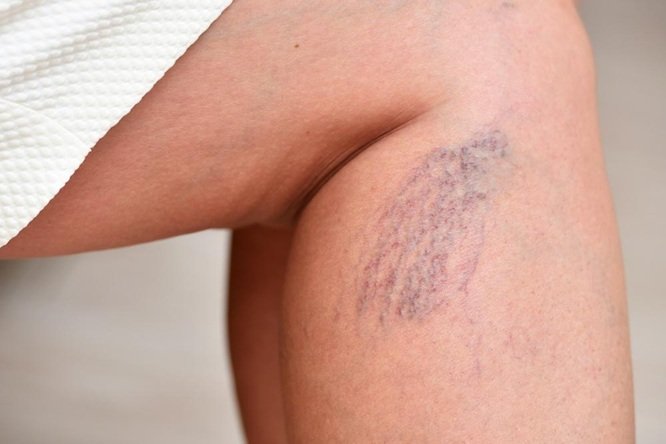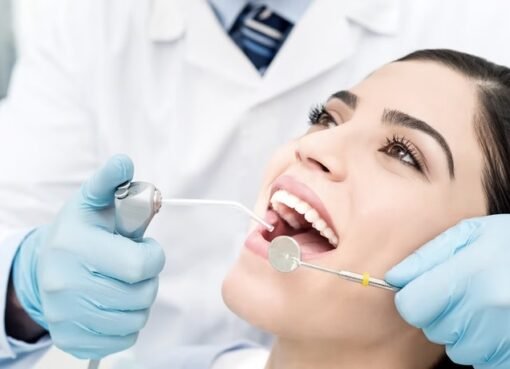How Spider Veins Can Affect Women’s Cardiovascular Health

Spider veins, those small, web-like clusters of veins visible on the skin’s surface, are often dismissed as a simple cosmetic annoyance. Yet, for many women, their presence may signal underlying issues in the circulatory system. These type of veins can provide insights into cardiovascular health, hormonal changes, and other medical conditions. Here are some ways these type of veins affect women’s cardiovascular health:
Underlying Issues with Circulation
Spider veins develop when blood vessels closer to the skin’s surface weaken or experience increased pressure. They can sometimes indicate challenges with overall blood circulation. Healthy veins rely on small valves to push blood back to the heart, working against gravity. If these valves become weak or damaged, blood may pool in the veins, resulting in what is clinically referred to as venous insufficiency.
For women, this venous insufficiency leads to these type of veins and cause leg heaviness, swelling, or aching. Over time, more severe conditions such as varicose veins could develop, which may further strain the cardiovascular system. When neglected, issues with circulation can even increase the risk of blood clots or deep vein thrombosis, conditions requiring immediate medical attention. Though spider veins themselves are not dangerous, they should prompt an evaluation of the broader circulatory system to identify possible concerns.
Hormonal Fluctuations and Their Influence
Another common factor contributing to the development of spider veins in women is hormonal fluctuation. Specific life stages, including pregnancy, menopause, or the use of hormonal birth control, may increase the likelihood of these veins appearing. Hormones such as estrogen and progesterone influence blood vessel elasticity and circulation. This can lead to changes in vein function over time.
For instance, during pregnancy, elevated progesterone levels and the uterus’s physical pressure on the veins in the lower body often lead to these kind of veins. These changes typically normalize after childbirth. Similarly, women undergoing menopause experience shifts in estrogen levels. This may weaken vein walls and affect circulation. For healthcare providers, connecting the hormonal dots to vascular symptoms can better support a patient’s cardiovascular wellness beyond symptom management.
Signs of Other Potential Issues
Though often harmless, spider veins can occasionally serve as a clue pointing toward more systemic health challenges. For some women, they may suggest strain on the venous system due to lifestyle factors. These factors include prolonged standing, sedentary habits, or obesity. Increased weight, in particular, exerts added pressure on the veins. This may make it harder for blood to circulate efficiently.
Women with this condition might also unknowingly have chronic conditions like hypertension or diabetes, both of which impair vascular health over time. Hypertension may increase pressure within the veins. Diabetes may weaken blood vessels or slow healing in the veins. Both scenarios underline the interconnectedness of these kind of veins with broader cardiovascular and metabolic health.
Preventative Steps
Though spider veins are rarely life-threatening, they paint an informative picture of a woman’s overall vascular health. By combining clinical evaluations with proactive lifestyle adjustments, patients can better manage their health in the long term. Encouraging better circulation through consistent movement. Additionally, a balanced diet and proper hydration. supports healthier veins. While many changes to the vascular system are inevitable as women age, addressing the related factors reduces the probability of additional complications. Encouraging better circulation through consistent movement. Additionally, a balanced diet and proper hydration supports healthier veins. While many changes to the vascular system are inevitable as women age, addressing the related factors reduces the probability of additional complications. For those looking to take further action, spider vein removal Grand Rapids clinics offer effective treatments that support both cosmetic goals and cardiovascular wellness.
See a Cardiologist to Treat Spider Veins
Spider veins present an opportunity to investigate potential cardiovascular concerns more comprehensively. These minor but visible signs on the skin’s surface offer a unique window into a patient’s internal health. It emphasizes the value of understanding appearance and function in circulation matters.



